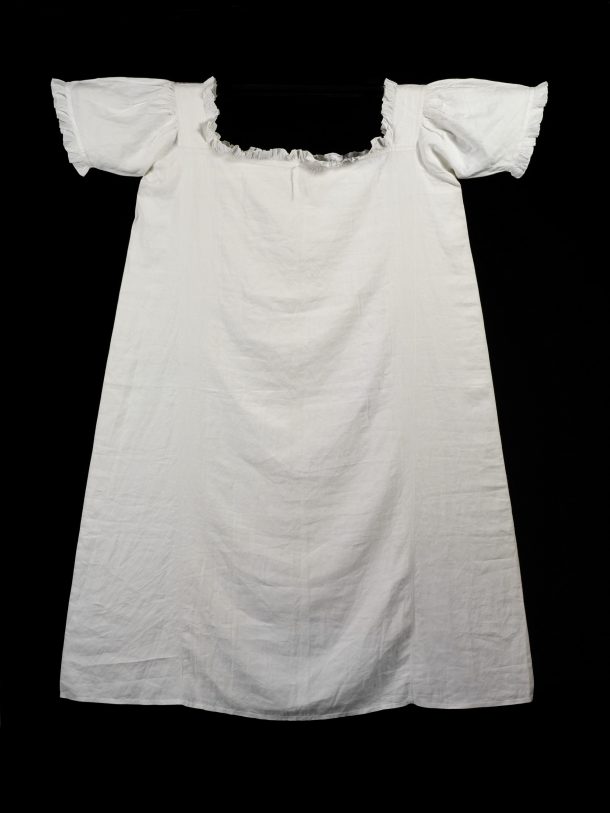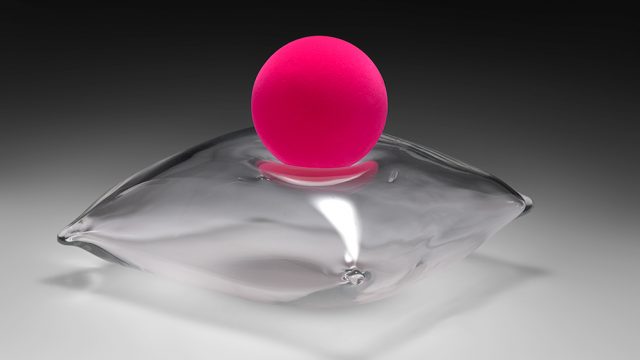In a meeting late last week, a colleague was talking about the importance of caring for your clothes, and loving and enjoying a garment for something other than its newness. In Japan, certain traditions fold around their cultural idea that material (and so, by association, clothing) grows more beautiful with age and wear. There is true pleasure to be found in old cloth. Edwina compared this to the comfort of treasured items of underwear – the fact that, the more you wash them, the softer that garment becomes.
After a cold and blustery week, this idea seemed particularly resonant. Today, our everyday underwear actually, generally, covers very little of our body. The garments we wear now tend to be made of fabrics which focus on being quick drying, easy care and being able to spring back into the desired shape. However, perhaps it takes only a little imagination to envision the comparative comfort of softened, laundered linen lying between us and the many other layers of clothing.
We will be displaying a chemise in ‘Undressed’ which was made in 1851 and is inscribed in ink with its maker’s name – ‘M.J Sanderson 3 1851’. Like most 19th-century undergarments intended to be worn next to the skin, the chemise is made of linen. Linen and cotton were the popular choices for undergarments of the period, and were considered comparatively easy to care for and robust. To us, the laundering routine still sounds rather laborious. First, the garments were soaked in lye (an alkaline solution made of water and white ashes), pounded and scrubbed in sop and hot water, then boiled, rinsed, and sometimes starched. They were wrung out, hung up to dry and, finally, ironed.

Chemise
Unknown
possibly Great Britain
1851
Linen, trimmed at the neck with muslin frill
Susan North gave a fascinating lecture at the London College of Fashion last week about ‘The Material Culture of Cleanliness’. In it, she spoke about linen being regarded, in the 17th and 18th centuries, as a tool of health and cleanliness. It was also a coded signal of respectability, meaning you might have wound up being judged if you showed up with your linen less that pristinely white. Luckily for the lye shy, many undergarments were adapted to have removable (and, therefore, changeable) sleeves, cuffs and collars, meaning that the bright white, exposed sections of your lower layers might deceptively disguise the grime lying beneath.
Unfortunately (or fortunately, depending on your perspective…) for the wearer of a chemise like this one from our collection, the sleeves are not removable, and so it would have to be washed regularly. Great country houses held their own laundry systems, which were often spread across three rooms – a wash-house, a drying loft or closet, and a laundry room. To avoid mishaps, or your delicates being misdirected, the largest, grandest houses and households added a further room for sorting to its laundry system. Those who couldn’t stretch to such systems would still either have a laundry maid or use a ‘send-out’ washing service, completed either by an official washhouse or by a woman working from her home. Garments were often initialled or labelled with their owner’s name to help them survive this process and find their way back home.
Going to such lengths to care for them, the relief and comfort of a favourite piece returning from the washhouse or sorting room, fresh and ready to serve again as your protective layer, must have been great indeed.




Clean linen as a sign of respectability – my Gran (born in 1906) always insisted on us having pristine clean underwear when we went out ‘in case we got run over – mortal injury evidently not as important as bringing shame on the family via a grubby vest…
I learnt about the use of linen for undergarments, with having clean linen meaning you were ‘clean’, as opposed to washing/bathing as now, in Katherine Ashenburg’s book ‘Clean – An unsanitised history of washing’.
However, I have long had a love of old and used linens because, thanks to use and washing, they’ve become soft and beautiful. I have quite a collection of table linens and handkerchiefs that I use for their original purpose, with old linen often being easier to launder than some more modern synthetic fibres. I also use my collection for my embroidery work as they’re so beautiful to handle and stitch on.
Good Evening! Gil Fewings comment made me laugh, why, because my grandmother taught my mother the same old lesson. She then taught my siblings and I.To This day my husband laughs at me. What can one say when you are brought up by an old fashioned lovely grandmother.